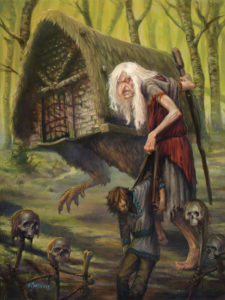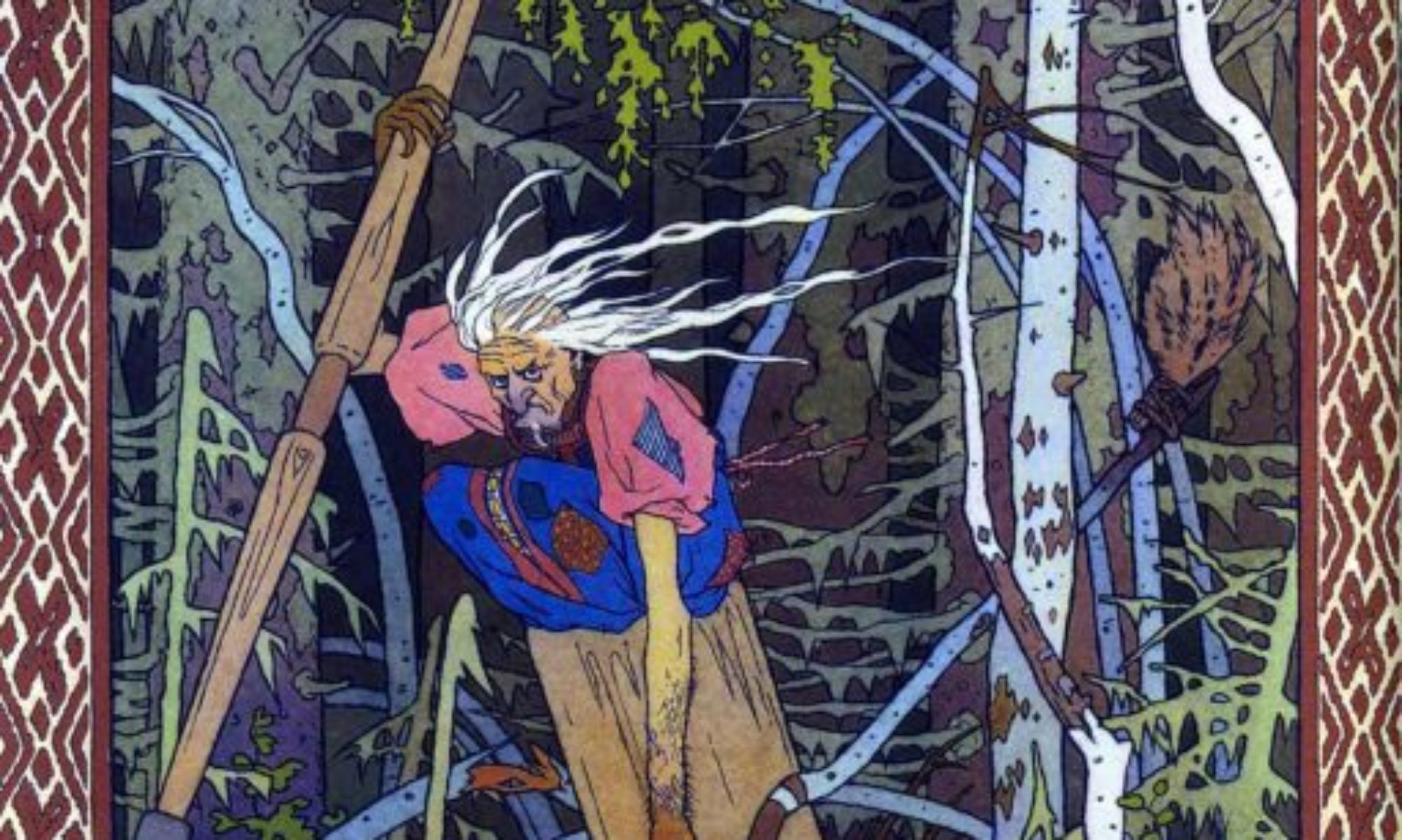Baba Yaga is described with a gruesome appearance, she possesses sharp iron teeth, a hideous long nose, drooping breasts, a leg made of clay and a skinny and bony physique . She also performs un-lady like actions, which denotes the opposite of every beautiful and maidenly aspect women are associated with. “She shows very few characteristics and tendencies of western witches, who were demonized by the Christian church, and who often tend to be beautiful and seductive, cruel and vicious” (Forrester 62).
She also performs un-lady like actions, which denotes the opposite of every beautiful and maidenly aspect women are associated with. “She shows very few characteristics and tendencies of western witches, who were demonized by the Christian church, and who often tend to be beautiful and seductive, cruel and vicious” (Forrester 62).
 Like the witches of other cultures, her preferred method of transportation is an implement commonly used for household labor, though unlike the witches of the West, rather than traveling upon a broom, she chooses to ride in a mortar, rowing with a pestle, and using a broom to sweep away the tracks that she leaves. Her mode of transportation itself offers symbolism. “Mortar and pestle are the instruments of destruction and of nurture and protection (clothing). In their symbolic form, they represent the human sexual organs, womb and phallus. Birth, generation, nurture and death are all conjoined here” (Hubbs 39). It is used not only to grind grain but also to prepare the flax which women use in spinning cloth (Hubbs 39) which holds a large feminine aspect.
Like the witches of other cultures, her preferred method of transportation is an implement commonly used for household labor, though unlike the witches of the West, rather than traveling upon a broom, she chooses to ride in a mortar, rowing with a pestle, and using a broom to sweep away the tracks that she leaves. Her mode of transportation itself offers symbolism. “Mortar and pestle are the instruments of destruction and of nurture and protection (clothing). In their symbolic form, they represent the human sexual organs, womb and phallus. Birth, generation, nurture and death are all conjoined here” (Hubbs 39). It is used not only to grind grain but also to prepare the flax which women use in spinning cloth (Hubbs 39) which holds a large feminine aspect.


